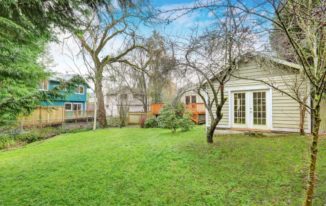While a finished basement is generally a project that occurs after a house has been built, it won’t think way. Most homeowners want their basements to feel cozy, comfortable and inviting, and much less as being a basement. Here are six good ways to you could make your basement lovely and livable.
1. Use Multiple Design Scheme Choices
Avoid finishing your entire space with one design scheme. Painting or decorating the complete basement much the same way can make it look like one giant room that has been finished just as one afterthought. You can vary the design in many ways. For example, separate the space into a few rooms or use furniture in a manner that generates a few separate areas. Also, vary the wall colors in each space to add interest and personality.
2. Flooring Options
Certain floor types like vinyl, tile, and carpet are the go-to flooring materials for basements since they’re all to easy to install over concrete. However, there are now other materials to take into account. Carpet tiles are an easy task to install and unlike wall-to-wall carpet, colors and patterns may be alternated to make a custom look.
Want an even more rustic look? Then engineered hardwood is an excellent consideration. It is composed of a veneer over a few layers of pressed wood and is a preferable material to wood since it doesn’t expand and warp all the. For a less costly option, consider laminate with the image of hardwood printed with a rigid core and sealed with resin. As technology has improved through the years, laminate products have become increasingly more authentic-looking.
3. Windows
To give your basement a homey ‘upstairs’ feel, take all the benefit from sunlight. Don’t obscure windows with drapes that can be fat. Use light-weight shades or none whatsoever. If your space lacks windows, consider digging a nice-looking light well outside of the foundation wall. Another less-expensive choice to make false windows by framing recesses within the wall and fitting them daylight-spectrum fixtures. Cover the recesses which have a translucent material or blinds to mimic the appearance of real windows.
4. Wall Treatments
One of the difficulties with finished basements is they can feel large and cavernous and lack personality. Built-in niches and wall-mounted or wall-washing light fixtures are good ways to combat this. These small additions can certainly produce a big impact. Artwork, wall cabinetry, built-ins, and furnishings that draw a person vision up breakup space by having vertical interest and provides your basement a main-level feel.
5. Color Choices
Light paint colors will help make your basement feel airier and larger, whereas dark colors will decrease the perceived size of a space.
6. Lighting
Make sure your walls receive adequate light. Use multiple light sources, including some that wash the wall. According to lighting designer Lisa Barter, “[recessed] can lights, unless they are adjustable or wall wash fixtures, typically don’t put sufficient light on vertical surfaces, that’s where the eye perceives light.” Consider cove or up-lighting to reflect light off the ceiling as well, and rehearse lamps or accent lights to accomplish away with shadowy corners.
With these tips to assist you as well as the assistance of your designer, your finished basement will be just as enjoyable and receive just the maximum amount of use because of the original levels of your house. Infuse it using a little inspiration plus a healthy dose of personality, and it might even receive more.














